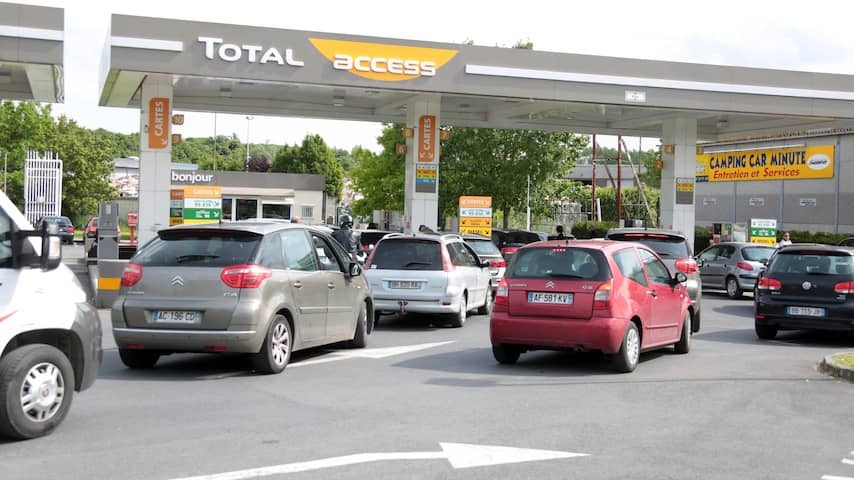
Many Dutch people can refuel cheaply in neighboring countries while on vacation. Those who take a smart detour can save tens of euros. Due to the rapidly rising oil prices, it even yields slightly more this year.
In few places in Europe is the gasoline price as high as in the Netherlands. This is because the government charges a lot of excise duty on a liter plus VAT on the increased amount. Next year, even more will be added.
The Dutch gasoline price (Euro 95 or E10) currently stands at an average of 1.90 euros per liter, according to the ANWB monitor. According to UnitedConsumers, which calculates the average recommended price of the five largest oil companies, it even rises to 2.11 euros at some pumps. The price difference is because Dutch gas stations often stunt with discounts.
If you go on vacation by car within Europe, you pay about 30 cents less per liter. Those who calculate smartly can even save with a detour. “Also for abroad: you will find a lower gasoline price if you go a few kilometers off the highway,” UnitedConsumers director Paul van Selms tells NU.nl. “You will find the best prices in the small towns.”
Belgium now charges an average of 1.60 euros for a liter of gasoline. France and Germany are about 10 cents above that, and in Luxembourg you even pay less: 1.47 euros per liter.
Save dozens of euros on a tank of gasoline
Detouring for refueling in Luxembourg can therefore easily yield money, provided you calculate well. A full tank is about 45 liters. That costs 85.50 euros in the Netherlands and 72 euros in Belgium. The profit is therefore 13.50 euros. If your car consumes 1 liter per 15 kilometers, you can drive a maximum of 101 kilometers back and forth if you want to keep money from your trip to Belgium.
In Luxembourg you pay 66.15 euros for 45 liters. With the same calculation, you can drive a maximum of 44 kilometers back and forth from Belgium to save on a tank of Euro 95. People who drive to Italy are best off filling up their car in Austria. There, gasoline prices are lower than in Germany and Italy.
Due to the unrest in the Middle East, the oil price has risen rapidly in the past year. In the Netherlands, the gasoline price rose faster than in surrounding countries, making the price difference greater. Van Selms estimates that you save 20 to 30 euros on a long vacation trip. “You can buy some ice cream and drinks from that.”
Those who drive diesel benefit less from small price differences. In the Netherlands, the average price is 1.81 euros per liter, in Belgium and Monaco 1.70 euros, and in Germany and France around 1.60 euros. Then you might save ten euros on a tank.
How to use up to 10 percent less fuel
An ANWB spokesperson advises to inflate the car tires well before departure. Then the car consumes less gasoline. You can find the recommended tire pressure in the manual of your car or on a sticker in the fuel filler flap or on the edge of a door.
Also remove the luggage rack from your car if you don’t need it: then the car catches less wind. “With this preparation, you can use up to 10 percent less fuel while driving,” says the ANWB spokesperson.
UnitedConsumers and the ANWB warn of long waiting times at cheap pumps. Due to the holiday period, a waiting time of up to twenty minutes at a Luxembourg gas station is not crazy these weeks.
“Tanking as cheaply as possible on vacation has now become a national sport,” says Van Selms. “You can ask yourself: is it worth the time to drive half an hour for a few euros? I think so for many Dutch people.”